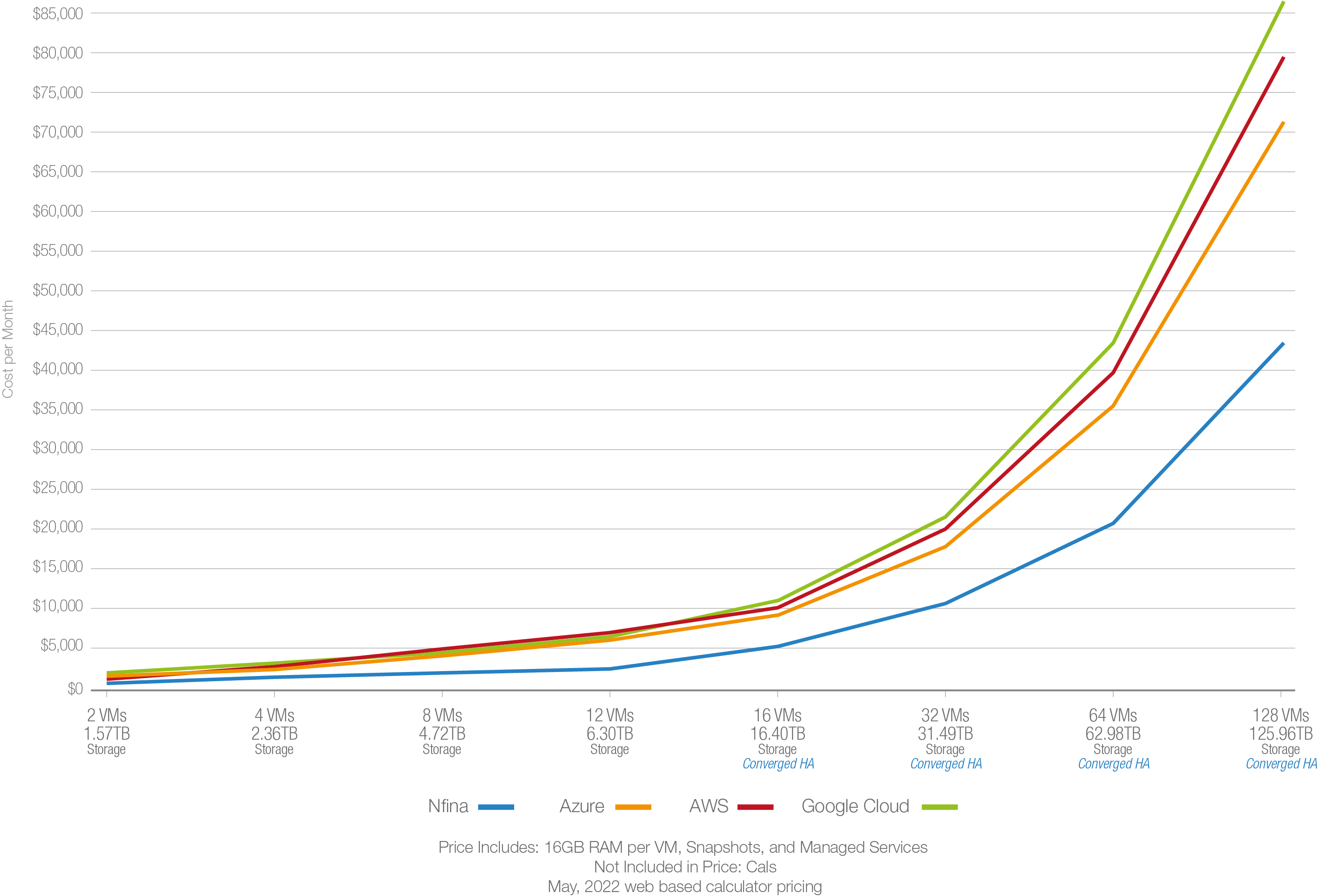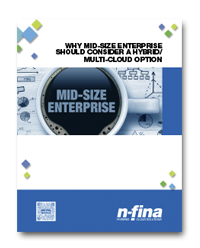Why Mid-Size Enterprise Should Consider a Hybrid/Multi-Cloud Option
Published: August 30, 2022,
By Gene Everette
Public Cloud Migration
A small percentage (~10%) of users have moved to the public hyperscale cloud for four main reasons:
- To eliminate their in-house data center that requires hardware maintenance.
- To move from a Cap-Ex model to an Op-Ex model.
- To outsource IT management and reduce their in-house resource debt.
- To improve SaaS workload agility. Public hyperscale clouds can scale horizontally and geo-redundantly on demand via Kubernetes and Docker Containers.
The fourth item is obvious, and the public hyperscale cloud is the clear technology of choice. However, the first three items have major drawbacks that have caused the mid-market buyers to pause and look for other alternatives and solutions. Let’s examine the problems with the first three in the list.
On-Premise Datacenter (Hardware)
If you have hardware in-house, you must update and maintain software and firmware on devices, firewalls, Ethernet switches/routers, motherboards, PCIe add-in cards, drives, etc. These tasks are very detail-oriented and furthermore, they are:
- Time-consuming
- Require users to generate and maintain excellent documentation.
- Require users to transition the learning curve on hardware and software support. There is no universal orchestration.
- Require troubleshooting of hardware incompatibility issues introduced by software and firmware updates.
- Require installing hardware cyber-security patches.
Obviously, if you can eliminate the in-house hardware, all these tasks go away right? Not so fast. All that has been accomplished is the outsourcing of these tasks to another team. The cost to outsource the hardware servicing will now be marked up and charged back to you. Also, who knows if they really do it, and on what schedule? The hyperscale cloud is 10x the cost of the on-premise hardware.
This function can also be outsourced for a fraction of the public hyperscale cloud. Nfina Technologies provides MSP services on the hardware and private cloud systems we sell, so you get the same functionality at a reduced price. This is the HaaS (Hardware-as-a-Service) part of any Hybrid and Multi-Cloud solution.
Nfina Hybrid Cloud vs. Azure, AWS, & Google Cloud

Cap-Ex vs Op-Ex Cost Savings?
Everyone knows that the public hyperscale cloud offering has a cap-ex (Capitalization Expense) vs op-ex (Operational Expense) advantage. But does it cover the differences in the cost to the Enterprise? That answer is a resounding NO! The public hyperscale cloud is 10x more expensive than an on-premise private cloud over a 5-year period. The rule of thumb is the hyperscale cloud providers pay for the hardware within the first 4 months of the contract. That means you pay for the hardware three times over, in the first year! The cost savings from op-ex tax treatment won’t even begin to cover that expense in the 3 or 5-year program.
As an example of a $100k system:
HW cost = $100,000. Accelerated amortization rules allow $33,333 to be written off each year.
Cloud Cost (same specs) = $25,000/month. The corporation can write off $300,000 in the first year.
However, look at the out of pocket expenses to the corporation over a 3-year period:
HW Cost = $100,000.
Cloud Cost = $900,000
Now which one looks cheaper?
Sure, you’ve received an $800,000 tax write-off over three years, but at what impact to your cash and profits?
Even at a 30% corporate tax rate, the hyperscale cloud projects a negative cash flow/profit deficit of $560k with respect to on-premise. In this example, the on-premise option is much better for cash flow and improves profits by a whopping 560%. If we extend the deal to 5-years, you are closer to -10x.
Outsourcing of IT Management
Every team is resource-limited, and the debt resources require to support moving to the cloud is quite high. This is why experts say that Midsize Enterprise companies should outsource this expertise and let someone else handle the heavy lifting.
However, users don’t have to settle for the public hyperscale cloud solutions from Azure, AWS, or Google and pay for features they will never use. Nfina Technologies can provide a managed Hybrid or Multi-Cloud solution at half the price of the public hyperscale cloud. Over a multi-year period, these savings add up.
Furthermore, Nfina’s approach provides rack-and-stack, setup, validation, migration, and runtime management, and remediation over the life of the contract. Also included in the price is expert OEM hardware updates on all your IaaS (Infrastructure-as-a-Service) equipment.
When comparing IaaS and public cloud companies do your due diligence. Ask yourself, what services and features do I need right now? Do I start small and scale up as my business grows or go all in? Ask about their disaster recovery services and how long it will take to restore your data. Calculate the lost revenue that you could incur if your attacked by ransomware or a natural disaster. Talk to each company and get comparable quotes for one, three, and five-year pricing.

